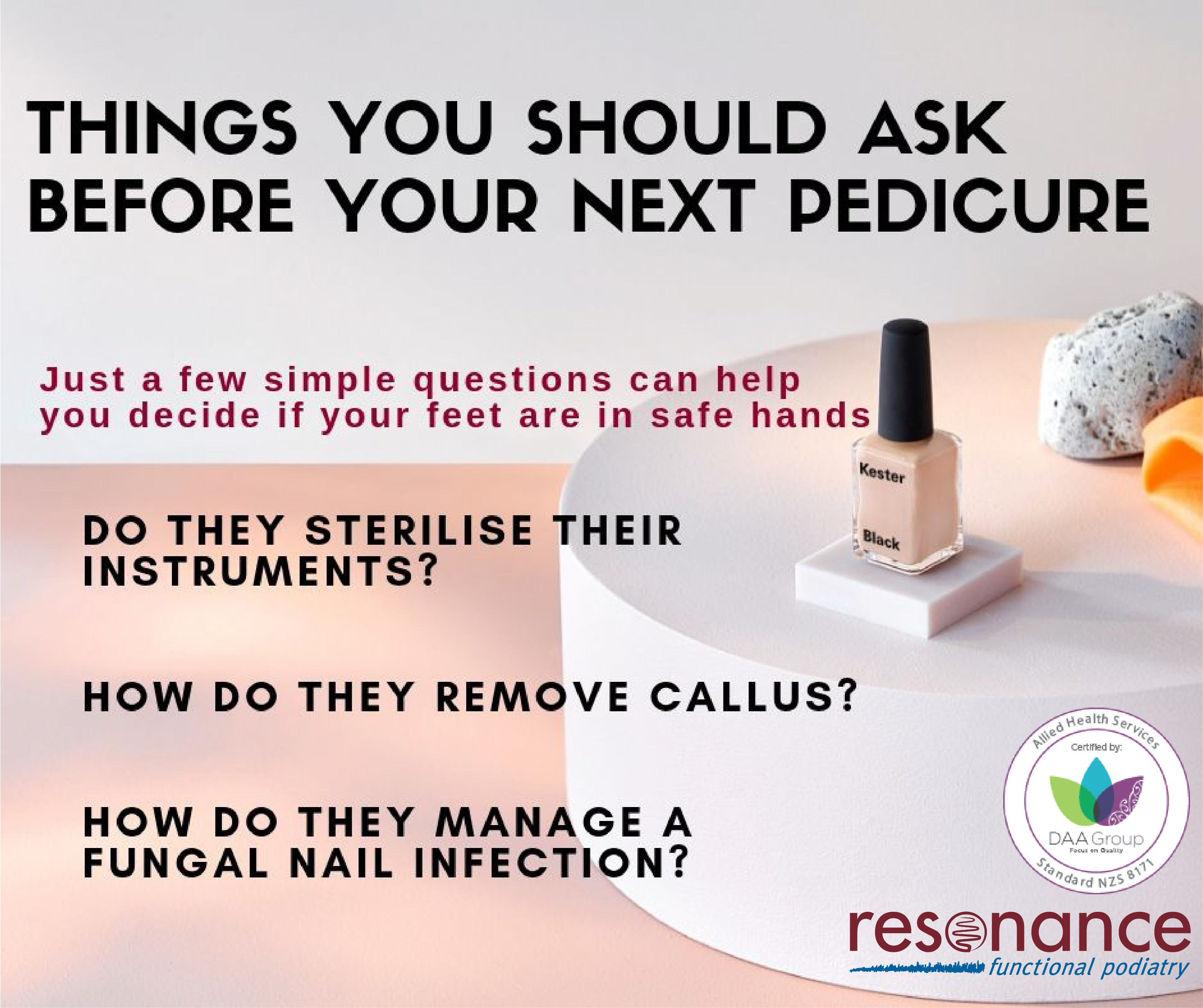Just a few simple questions can help you decide if your feet are in safe hands
Do they sterilise their instruments?
Podiatrists are registered healthcare providers, which means that we maintain very strict hygiene conditions. All instruments that come into contact with skin or nails are only used on a single client before being thoroughly cleaned and sterilised in an autoclave, and everything else such as sanding disks or blades are single use only. This means it is highly unlikely that you will catch a bacterial or fungal infection from a visit to your podiatrist.
A lot of nail bars do not maintain such stringent hygiene standards. A recent study found that only 12% of Wellington nail salons maintain adequate hygiene standards; because they are not registered and there are no local bylaws, there is no regulation to guide or maintain their levels of cleanliness. This leaves the consumers at risk of developing infections of the skin and nails due to improper hygiene practices.
How do they remove dead skin or callus?
Technically, they shouldn’t be removing any hard skin from people’s feet, as this puts the client at risk of a skin breach which increases the potential for spreading blood-borne infections such as hepatitis or HIV. However, if they do remove skin, it should be with a single use file or sanding disk – you don’t want someone else’s dead skin rubbed all over your feet from a multi-use foot file!
By comparison, your podiatrist can safely and painlessly remove hard, rough skin using a sterile scalpel, which is a lot more efficient than a hand-held foot file, particularly for areas such as heels, which are prone to very thick, cracked skin.
How do they manage a client with a fungal nail infection?
When you’re dealing with feet all day, you see a lot of fungal toenail infections. The difference between a podiatrist and a nail technician is that podiatrists can help treat a fungal infection, whereas most nail technicians will simply continue to cover it up with polish. There are a several issues with this, one main issue being that polish is applied directly to the nail plate, in contact with the infection before being dipped back into the bottle which increases the risk of passing on that infection to another client.
At Resonance Podiatry you can be assured that we adhere to strict hygiene standards, and as health professionals, we are dedicated to improving foot health.
Written by Resonance Podiatrist Bronwyn Easterbrook-Smith
0800 473 776

